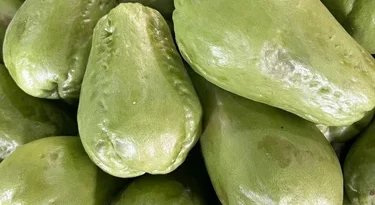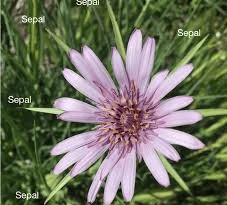Rice Spikelets: Economic Importance, Uses and By-Products
Rice spikelets are the flowering structures of rice plants (Oryza sativa) that contain the reproductive organs responsible for producing rice grains. These spikelets are the basic units of the rice inflorescence and play a crucial role in the plant’s reproduction and grain formation.
Rice spikelets are grouped together in a larger structure called the rice panicle or inflorescence. A rice panicle can contain varying numbers of spikelets, depending on the rice variety and growing conditions. Spikelets develop along branches called rachises, which are attached to the main stem of the rice plant.
During the flowering period, the rice spikelets undergo pollination and fertilization. Pollen from the stamens is transferred to the stigma of the pistil, leading to the formation of seeds within the ovary. Once fertilized, the ovary develops into the rice grain we commonly consume.
It is important to note that the appearance of rice spikelets can vary depending on the rice variety and environmental factors. Different rice varieties have been cultivated over centuries, leading to a wide range of spikelet shapes, sizes, and colors.
The Economic Importance and Uses of Rice Spikelets

Rice spikelets are an essential component of the rice plant and play a crucial role in its reproductive cycle. The economic importance and uses of rice spikelets are primarily centered around their role in rice production, human consumption, and various industrial applications.
Here are some key points along with examples:
1. Rice Production and Food Security: Rice spikelets are the source of rice grains, which are a staple food for over half of the world’s population. They provide essential carbohydrates and nutrients, contributing significantly to global food security. Different rice varieties have varying spikelet arrangements and grain sizes, affecting yield and quality. For example, long-grain rice varieties like Basmati are known for their distinct aroma and are highly valued in many cultures.
2. Trade and Commerce: Rice is one of the most traded commodities globally, and the economic value of rice spikelets lies in their potential for trade and export. Countries with high-quality rice varieties can benefit economically from international rice trade. For instance, Thailand is a major exporter of Jasmine rice, which is known for its fragrance and unique taste.
3. Cultural and Culinary Significance: Rice is a staple in many cuisines and holds cultural and culinary importance in various societies. Different types of rice are used to prepare a wide range of dishes, from savory meals to desserts. For example, sushi, a popular Japanese dish, is made using short-grain rice that is specially cultivated for its stickiness.
4. Livelihoods and Employment: Rice cultivation supports millions of livelihoods worldwide, providing employment opportunities for farmers, laborers, processors, and traders. The entire value chain, from cultivation to distribution, generates economic activity in rural areas. In countries like India and China, rice farming is a significant source of rural employment.
5. By-Product Utilization: Apart from rice grains, other parts of the rice plant, including spikelets, can have economic uses. By-products such as rice bran and rice husk have applications in industries like food processing, animal feed, and even biofuel production. Rice bran oil, extracted from the outer layer of rice grains, is used for cooking and has various industrial applications.
6. Research and Breeding: Understanding the genetics and characteristics of rice spikelets is crucial for crop improvement through breeding programs. Researchers work on developing rice varieties that have higher yields, better resistance to pests and diseases, and improved nutritional content.
Read Also: Rice Panicles: Economic Importance, Uses and By-Products
7. Biodiversity Conservation: Different rice varieties have unique spikelet structures and genetic traits. Conserving the genetic diversity of rice spikelets is essential for maintaining resilient rice crops in the face of changing environmental conditions. Seed banks and conservation efforts help safeguard rare and traditional rice varieties.
8. Rice-Based Industries: Rice spikelets are the raw material for various rice-based industries. Apart from direct consumption, rice is processed into a range of products such as rice flour, rice noodles, rice cakes, and more. These processed products have diverse culinary and industrial applications. For example, rice flour is used in baking, while rice noodles are a staple in Asian cuisine.
9. Tourism and Cultural Experiences: In regions where rice cultivation is a traditional practice, such as terraced rice fields in Southeast Asia, rice paddies and spikelets contribute to the beauty of landscapes and attract tourists. Agritourism and cultural experiences centered around rice farming offer economic opportunities for local communities. Tourists visiting these areas can engage in activities like rice planting and harvesting.
10. Traditional Medicine and Practices: In some cultures, rice and its various parts, including spikelets, have been used in traditional medicine and healing practices. Rice water, the starchy water left after rinsing rice, has been used for its potential skin-soothing properties. It can be applied to the skin or used in cosmetic products.
17. Educational and Awareness Initiatives: Rice spikelets play a role in educational and awareness initiatives related to agriculture, nutrition, and sustainable food production. Studying the growth and development of rice plants, including spikelets, can help students and communities understand the importance of agriculture and make informed choices about food consumption.
18. Biochemical and Genetic Studies: Rice spikelets serve as a subject of study in various scientific disciplines, including genetics, biochemistry, and plant physiology. Researchers investigate the molecular mechanisms behind spikelet development, seed formation, and other aspects to gain insights into crop improvement, adaptation, and response to environmental stresses.
19. Environmental Services: Rice cultivation, including the presence of spikelets, can have positive environmental impacts. Rice fields act as wetlands that provide habitat for various aquatic species and support biodiversity. Additionally, the flooded conditions of rice paddies can play a role in water purification and nutrient cycling.
20. Art and Craftsmanship: In some cultures, rice and rice spikelets are used for artistic and craft purposes. Intricate designs and patterns can be created using colored rice grains and spikelets, adding aesthetic value to traditional art forms.
21. Climate Adaptation and Resilience: Certain rice varieties are adapted to specific climatic conditions, including drought and flood tolerance. Spikelet characteristics, such as panicle architecture and grain size, can influence a rice variety’s resilience to climate change impacts. Developing climate-resistant rice varieties can contribute to food security in changing environmental conditions.
The Products and By-products That Can Be Derived From Rice Spikelets
Rice spikelets are the small units that make up the rice inflorescence, containing the flowers and later developing into rice grains. Various products and by-products can be derived from rice spikelets through different processes.
Here is a list along with explanations, examples, and processes for each:
1. Rice Grains (Main Product): The primary product obtained from rice spikelets is the rice grain itself. The grains can be further processed to produce various types of rice, such as white rice, brown rice, parboiled rice, and more.
After harvesting, rice spikelets are threshed to separate the grains from the husks. The grains are then subjected to milling, which involves removing the outer layers (husk, bran, and germ) to produce polished rice.
2. Rice Bran Oil (By-product): Rice bran, the outer layer of the rice grain, contains a high amount of oil. Rice bran oil is extracted from rice bran and is used for cooking and industrial purposes. The process involves solvent extraction or cold pressing of rice bran to obtain rice bran oil.
3. Rice Husk (By-product): The outer protective covering of the rice grain is the rice husk. It has various applications due to its high silica content. Rice husks can be separated from the rice grain during threshing. They can be used directly or processed to remove impurities.
4. Rice Bran (By-product): Apart from oil extraction, rice bran can be used in various applications due to its nutritional content. Rice bran is obtained during the milling process. It can be stabilized to extend shelf life.
5. Rice Straw (By-product): The stalks that hold the rice spikelets are called rice straw. They can be used for various purposes. Rice straw is obtained during threshing. It can be collected, dried, and processed.
6. Rice Germ (By-product): The germ is the embryo of the rice grain and contains essential nutrients. Rice germ is obtained during milling. It can be separated and processed.
7. Rice Water (By-product): The water used for washing rice is known as rice water. It contains starch and can have various applications. Rice water is obtained during rice washing.
8. Rice Vinegar (By-product): Rice vinegar is produced through the fermentation of rice water. Rice water is fermented using acetic acid bacteria.
9. Rice Flour (By-product): Rice flour is obtained by grinding rice grains and can be used for cooking and various applications. Rice grains are ground into a fine powder.
10. Rice Bioethanol (By-product): Rice spikelets contain starch that can be converted into bioethanol through fermentation. Starch from rice spikelets is enzymatically converted into sugar, which is then fermented into ethanol.
11. Rice Starch (By-product): Rice spikelets contain a significant amount of starch, which can be extracted and used in various industries. Rice grains are ground to separate starch from other components. The starch is then washed and dried.
12. Rice Protein (By-product): Rice protein can be extracted from rice bran and used in the food and supplement industries. Rice bran is processed to isolate protein through methods such as enzymatic hydrolysis and precipitation.
13. Rice Fiber (By-product): Rice bran contains dietary fiber that can be extracted and used for nutritional and functional purposes. Rice bran is processed to remove fat and obtain rice fiber.
Read Also: Rice Stems: Economic Importance, Uses and By-Products
14. Rice Paper (By-product): Rice paper is a thin edible sheet made from rice flour and water, commonly used in Asian cuisine. Rice flour is mixed with water to create a batter, which is then spread thinly and cooked. Example: Spring rolls, rice paper wraps.
15. Rice Water Soluble Extracts (By-product): Water-soluble compounds from rice spikelets can be extracted and used in various applications. Rice spikelets are processed to extract water-soluble compounds through methods such as soaking and filtration. Example: Beverage flavorings, cosmetic formulations.
16. Rice Syrup (By-product): Rice syrup is a natural sweetener obtained from rice starch. Rice starch is enzymatically hydrolyzed to break down starch into sugars, and the resulting syrup is filtered and concentrated.Example: Food sweetener, natural ingredient in confectionery.
17. Rice Silica (By-product): Rice husk contains silica, which can be extracted and used in various industries. Rice husks are burned to produce rice husk ash, from which silica is extracted. Silicon production, ceramics, construction materials.
18. Rice Wine (By-product): Rice wine is produced through the fermentation of rice starch. Rice starch is converted into sugars and fermented by yeast to produce alcohol Rice wine for culinary use, traditional alcoholic beverages.
19. Rice Fermented Products (By-products): Rice spikelets can be used to produce various fermented products. : Rice can be fermented using specific microorganisms to create products like rice-based pickles, miso, and more. Example: Fermented rice pickles, rice-based fermented condiments.
20. Rice-Based Cosmetics (By-products): Compounds from rice spikelets can be incorporated into cosmetic products. Extracts or derivatives from rice spikelets are used in cosmetic formulations.
These additional products and by-products further highlight the versatility of rice spikelets and the potential uses that can be derived from various components of the rice plant. The processes involved in obtaining these products often require specialized techniques and technologies to extract and refine specific compounds.
In conclusion, the economic importance and uses of rice spikelets extend beyond their role as a staple food source. They contribute to various sectors, from industry and trade to culture, research, and sustainability efforts.
Read Also: The Role of Livestock Farming in a Sustainable Food System









